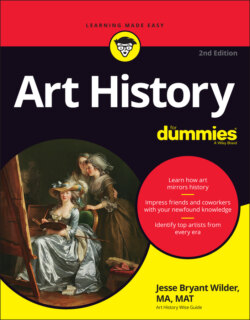Читать книгу Art History For Dummies - Jesse Bryant Wilder - Страница 34
Promoting politics and propaganda
ОглавлениеThe U.S. Constitution guarantees separation of church and state. But in many earlier civilizations, religion and politics were two sides of the same coin. Egyptian art was both religious and political. Egyptian pharaohs, for example, viewed themselves as the gods’ divine representatives on earth. The notion of the divine right of kings, in which kings were supposedly appointed by God to rule on earth (and which continued up to the French and American revolutions in the late 1700s), is analogous to these Ancient Egyptian beliefs.
Here are examples of how art expresses power politics:
Art immortalizing achievement: In Ancient Greece, Pericles (the leader of Athens at its cultural and political peak) ordered and paid for the building of the Parthenon and other monuments (using money permanently borrowed from Athens’s allies) to memorialize Athenian power and prestige. “These works will live forever as a testament to our greatness,” he said. This art was meant to glorify the state.
Art celebrating victory and power: Similarly, the Romans erected columns, such as Trajan’s Column (see Chapter 8), and triumphal arches, like the Arch of Constantine, to celebrate Roman victories and assert Roman power.
Art inciting activism: In the early 19th century, the French Romantic painter Eugène Delacroix fired up people to fight for democracy with his painting Liberty Leading the People (see Chapter 17). In the 1960s, artists like Jaspar Johns and Carolee Schneemann created protest art to stop the war in Vietnam.
